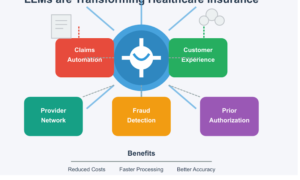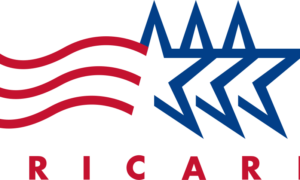How Do Insurance Companies Use Technology?
From categorizing claims images to bringing their processes into the digital era, here are 13 answers to the question, “What are the most interesting ways insurance companies use technology?”
- Classifying Claims Images
- Reducing a Substantial Amount of Paperwork
- Restructuring Car Insurance With Telematics
- Improving Customer Service and Reducing Costs
- Making the Process Fast and Friendly
- Analyzing Data
- Settling Self-service Claims
- Streamlining With a Robotic Process Automation (RPA)
- Evaluating Risk With Machine Learning
- Detecting Fraud
- Bettering the Underwriting Process
- Storing Info Safely on the Blockchain
- Modernizing Legacy Systems
Classifying Claims Images
Insurance companies use technology in a variety of ways to improve their processes and services. For example, they may utilize machine learning algorithms to accurately identify and classify images related to the claims process, such as photographs of damaged property taken by claimants.
This powerful technique automates the analysis of large amounts of data, allowing insurance companies to quickly evaluate the images submitted and process the claim more efficiently.
Michael Alexis, CEO, swag.org
Reducing a Substantial Amount of Paperwork
Remember how getting insurance always involved a lot of paperwork and countless signatures? Even worse was if you ever had to process a claim. All that paperwork taught you a lot of patience.
In addition to this constant struggle with frustration, you wondered if the companies deliberately made this difficult to discourage you from going through with it. Well, thanks to new digital upgrades and the introduction of technologies such as virtual policies and forms to cloud storage, insurance companies have said goodbye to much of that paperwork. Not completely, of course, but enough to be noticed.
The most beneficial advantages include the optimization of company resources and more forgiving processes for consumers.
Riley Beam, Managing Attorney, Douglas R. Beam, P.A.
Restructuring Car Insurance With Telematics
Thanks to the technology of telematics—the method of monitoring vehicles via GPS and onboard diagnostics—car insurance companies can offer customized coverage and premiums built around a customer’s driving profile.
Usage-based insurance (UBI), either pay-per-mile or pay-as-you-drive, involves using a tracking device that collects data including mileage, driving patterns, speed, acceleration, hard braking, and erratic driving. The safer you drive and the less you drive can add up to significant discounts on your car insurance.
Some insurance companies claim the savings can be as high as 40%, reducing your rate by hundreds of dollars annually. Most insurance companies provide a UBI program. These include Allstate’s Drivewise, American Family’s KnowYourDrive, Farmers’ Signal, Geico’s DriveEasy, Nationwide’s SmartRide, Progressive’s Snapshot, State Farm’s Drive Safe and Save, Travelers’ IntelliDrive, and USAA’s SafePilot.
Michelle Robbins, Licensed Insurance Agent, Clearsurance
Improving Customer Service and Reducing Costs
One way they are using technology is to automate processes such as claims, customer service inquiries, and payments. By automating these processes, insurance companies can improve accuracy, reduce processing times, and eliminate errors.
Additionally, many insurance companies are using digital marketing techniques to facilitate customer acquisition, such as creating chatbots and automated systems to respond to customer inquiries and questions.
By using these methods, insurance companies can provide faster service and better customer engagement. Additionally, they can also use data analytics to better understand customer needs and preferences and better target their advertising campaigns.
Brenton Thomas, CEO, Twibi Digital Marketing Agency
Making the Process Fast and Friendly
One way we use technology is through an online quote and enrollment process. Pet owners can easily get a quote and sign up for insurance coverage online in just a few minutes, without the need to speak with an agent or complete lengthy paper forms. The entire process is fully digital and mobile-friendly, making it easy for pet owners to access and use on the go.
We also use technology to automate certain aspects of the claims process, including the ability to submit and track claims online. Pet owners can submit claims through the company’s online portal and can track the status of their claims in real-time.
The claims process is also streamlined and faster than traditional insurance companies, with most claims processed and paid within two days.
Trey Ferro, CEO, Spot Pet Insurance
Analyzing Data
Insurance companies use technology to collect and analyze enormous amounts of data that help them understand risk factors and how to price different policies. They can also use this data to help identify trends and make better-informed decisions on risk assessment and claims management.
Analyzing data will also help insurance companies process claims and detect fraudulent activities faster and more accurately.
Anthony Martin, Founder and CEO, Choice Mutual
Settling Self-service Claims
Insurance companies are following in the footsteps of the food and retail industries in offering self-service to their customers. Traditionally, insurance companies have heavily relied on manual processes, for example, in reviewing claims. However, this work is highly intensive and time-consuming.
Insurance companies are now implementing self-service technology in claim settlement and customer care. With this technology, insurance companies can not only save time and costs but also offer responsive and personalized experiences to their customers.
Shawn Plummer, CEO, The Annuity Expert
Streamlining With a Robotic Process Automation (RPA)
Recently, I had to call my insurance company after suffering a minor accident. When I began speaking to the customer service representative, it soon became clear to me that Robotic Process Automation (RPA) was being used by the insurer.
RPA automates routine and mundane tasks with little or no human intervention, thereby freeing up valuable staff time for other tasks. It made the process much swifter for me as it allowed data to be instantly pulled from one system into another; the entire process was quickly completed in almost half the time compared to before this technology was implemented.
Lorien Strydom, Executive Country Manager, Financer.com
Evaluating Risk With Machine Learning
Insurers are leveraging big data and machine-learning techniques to significantly improve the accuracy of their pricing models. Utilizing predictive analytics, insurers can determine a customer’s risk profile and estimate expected losses from different events.
This information is then used to develop more accurate rates for individual customers, allowing insurers to evaluate risk and price insurance premiums more accurately. Additionally, machine learning can be used to identify fraud or other suspicious activity to reduce losses from fraudulent claims.
Peter Lucas, Owner, Relocate to Andorra
Detecting Fraud
Fraud in the insurance industry costs millions of dollars to insurance companies. There are many cases of fraud in insurance. The advent of technologies like machine learning, predictive analysis, data mining, and others has helped the insurance industry in fraud prevention and detection. Advanced automation and analytics have empowered insurance companies to keep track of fraud.
Here are some of the common benefits of using technology that also prevent fraud:
- Digital Signature: Prevents fraud insurance purchases and lowers fake account activation
- Lowering Underwriting Cost: Real-time information is used for better pricing/underwriting
- Data Analytics: Data and predictive analysis are applied to detect fraud.
Technology has lowered the cases of fake applicants, accounts, and many other illegal processes. The insurance industry can thrive like never before with the help of technology.
Yogesh Kumar, Digital Marketing Manager, Technource
Bettering the Underwriting Process
Insurance companies are some of the most tech-savvy businesses out there. They use technology in many ways and have been particularly keen to adopt innovative solutions.
Insurers leverage AI technologies like machine learning (ML) or predictive analytics for risk management purposes. By using ML models for underwriting new policies, insurers can predict customer behavior with greater accuracy and thus manage existing risks better or avoid taking up high-risk policies altogether.
Companies like Allstate have even implemented a system that uses data gathered from third-party sources such as satellite images or social media posts to help develop an accurate picture of potential claims scenarios so they can better manage risk mitigation efforts in a timely manner.
Roksana Bielecka, Community Manager, ResumeHelp
Storing Info Safely on the Blockchain
Blockchain has become an increasingly popular tool for these companies; it enables them to securely store and manage vast amounts of sensitive data, allowing them to identify and settle claims more quickly and accurately.
Blockchain also allows insurance providers to better track customer behavior, enabling more tailored coverage for those who need it most. An additional benefit is the enhanced fraud detection capabilities stemming from this technology; the immutable ledger ensures that information entered into the system can be verified across multiple sources with accuracy.
Daniel Pfeffer, CEO, Scrape Network
Modernizing Legacy Systems
One of the primary ways the Big Four leverage technology is through legacy system modernization. Legacy systems can be really costly and difficult to maintain, so overhauling them and ushering their frameworks into the digital age makes perfect sense.
This is especially true for large insurance carriers with expansive customer bases that need web-based tools for access to policy information. They are becoming increasingly dependent on online interactions for customer service purposes and must keep up with these demands.
Legacy system modernization helps them stay competitive within their respective regions and on an international scale.
Johar Inam, Project Manager, Solar Panel Installation
Related Questions:



































